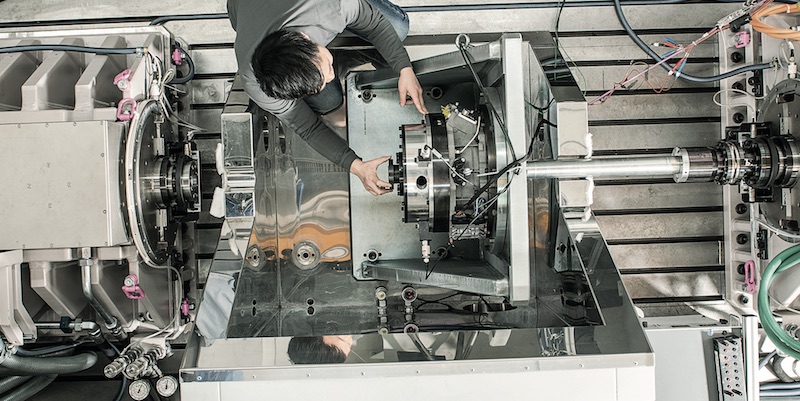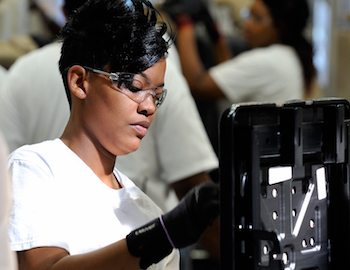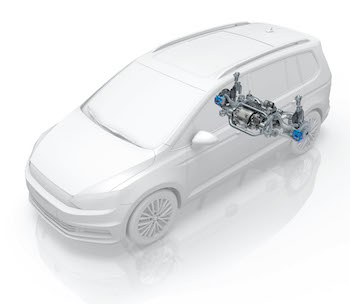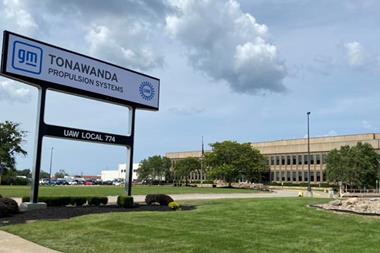The continually restructuring tier supply environment is witnessing record M&A activity amid rapid technological change
 Tier one suppliers currently face a bewildering mix of challenges, some long-term and some short-term in impact. This has always been the case, but the pace of change and the scale of adjustment required now are arguably both far quicker and wider ranging than in the past.
Tier one suppliers currently face a bewildering mix of challenges, some long-term and some short-term in impact. This has always been the case, but the pace of change and the scale of adjustment required now are arguably both far quicker and wider ranging than in the past.
This is because some long-term challenges threaten the very basis of business for some companies. For example, autonomous cars will likely mean the end of the traditional steering wheel, pedals and related components; similarly, with a vehicle’s speed being controlled by computers, traditional mechanical brakes should, in theory, become redundant. Meanwhile, safety technologies which have seen stellar rates of growth in recent years, notably airbags, or active head rests, will also become unnecessary; fully connected or autonomous cars will not crash into each other, assuming of course that the controlling computer technology does not fail.
 The interesting question is, no matter how reliable and safe autonomous braking and speed control systems are said or prove to be, when will vehicle companies stop fitting traditional safety technologies? The jury is out on this question and it may be some suppliers will see their business last longer than the theory of full vehicle autonomy suggests is necessary. While the industry works out how to adapt to the future of autonomous and electrified vehicles, short-term issues like the cartel investigation in Germany, the impact of Brexit on the European supply chain and President Trump threatening to re-write the NAFTA deal loom large. However, with the consequences of these political developments far from clear, many companies are focusing on strategic long-term issues; short-term tactical issues will be dealt with as their outcomes become clear.
The interesting question is, no matter how reliable and safe autonomous braking and speed control systems are said or prove to be, when will vehicle companies stop fitting traditional safety technologies? The jury is out on this question and it may be some suppliers will see their business last longer than the theory of full vehicle autonomy suggests is necessary. While the industry works out how to adapt to the future of autonomous and electrified vehicles, short-term issues like the cartel investigation in Germany, the impact of Brexit on the European supply chain and President Trump threatening to re-write the NAFTA deal loom large. However, with the consequences of these political developments far from clear, many companies are focusing on strategic long-term issues; short-term tactical issues will be dealt with as their outcomes become clear.
Across the industry, one constant feature is the acquisition of companies, with a record number expected in 2017. PWC predicts the value of automotive acquisitions in 2017 at $57bn, close to double the value of 2016 deals. PWC expects more than 200 automotive acquisitions by the year-end, focused on autonomous and connected technology, but with notable purchases in traditional technologies too: moves by Linamar, Lear and Adient referred to later illustrate this well. Other notable themes include: the Chinese accounting for 17% of deals, reflecting their increasing global role; electronics accounting for 36% of total deal value; and consumer electronics companies, such as Intel are entering the automotive industry in a major way.
Other recent examples of sector consolidation can be found in castings and wheels. In July 2017 Linamar acquired two French companies, SAM and FVM and Spanish company Alfisa (all in bankruptcy). These design, cast and machine of high-pressure aluminium components; Linamar had already played a significant role in consolidation in casting, having acquired GF Automotive, a major high-pressure die-casting business, and Montupet’slow-pressure die-casting business.
Meanwhile Accuride, a US wheel company, strengthened its position by acquiring German company Mefro in June 2017.This adds eight steel wheel plants in Germany, France, Turkey, China and Russia to Accuride’s global production network. Accuride, owned by private equity company Crestview Partners, has been acquisitive in recent years; it bought Gianetti Ruote, an Italian steel wheel company in 2015 and in May 2017 acquired KIC, a manufacturer of commercial vehicle wheel-ends, based in Washington state.
Consolidation intensifies the trendThe vertical integration strategies followed by Lear and JCI/Adient have been accompanied by continued sectoral consolidation. In February 2017, Lear announced it would buy Antolin‘s seat business for US$307m, strengthening Lear’s position in seat supply in Europe especially. In selling its seat assembly, structures, mechanisms and trim business, Antolin will focus on interiors, especially headliners and overhead systems in which it is a global leader. Adient recently announced it would pay US$360m for Futuris, a seating and interiors company with 15 facilities in North America and Asia, widening its capacity in full seats, frames, trim, headrests, arm rests and bolsters and bringing new customers, including Tesla, Geely, Chery and Brilliance. Other recent examples of sector consolidation can be found in castings and wheels (see box right Wheel deals in motion).
The emergence of autonomous and connected vehicle technology is leading to existing players redefining their businesses, while Google and Tesla have become significant automotive players. In parallel, another trend could have even wider consequences for the industry: according to Forbes, there are more than 1700 start-up, new technology companies focused on the automotive market. Forbes sees these as potentially hugely disruptive to the traditional industry.
 They focus on electrification, sensors, artificial intelligence algorithms, mobility systems, machining learning and others. As well as threatening the existing supply chain, these companies’ technologies have the potential, as noted earlier, to render much of the traditional supply chain obsolete. This trend seems unstoppable and it is merely a matter of time before many of the major automotive component companies of today become relics: or this true? Companies like Bosch and Continental are not standing still and are embracing the challenges of electrification, connectivity and autonomy to remain major players. Meanwhile for interiors companies, the autonomous vehicle allows the whole vehicle interior to be redefined; instead of forward-facing seats and a dashboard, car interiors could – and probably will in some cases – become fully mobile offices, mobile living rooms or entrainment spaces. Adient, Lear and others have already shown their thinking in this area with interior concepts shown at various recent motor shows.
They focus on electrification, sensors, artificial intelligence algorithms, mobility systems, machining learning and others. As well as threatening the existing supply chain, these companies’ technologies have the potential, as noted earlier, to render much of the traditional supply chain obsolete. This trend seems unstoppable and it is merely a matter of time before many of the major automotive component companies of today become relics: or this true? Companies like Bosch and Continental are not standing still and are embracing the challenges of electrification, connectivity and autonomy to remain major players. Meanwhile for interiors companies, the autonomous vehicle allows the whole vehicle interior to be redefined; instead of forward-facing seats and a dashboard, car interiors could – and probably will in some cases – become fully mobile offices, mobile living rooms or entrainment spaces. Adient, Lear and others have already shown their thinking in this area with interior concepts shown at various recent motor shows.
Many start-ups are based in California, where much of the technology business’ recent growth emanates; but Israel is also a significant player in high-tech automotive areas. Mobileye, acquired recently by Intel for US$15bn, began life as an Israeli start-up. In an interesting move, Intel signified the importance of Mobileye by moving its entire automotive unit to Israel.
On some occasions, new start-ups will be acquired to protect existing businesses from losing out to competitors’ acquisitions; while Intel was buying Mobileye, Valeo acquired Gestigon, a German start-up which produces in-car 3D image processing software which help both drivers of today and future autonomous cars of tomorrow drive more safely. Some tier 1s will go by the wayside as a result but others will redefine themselves and retain their positions as market leaders.
Retaining such positions will involve more acquisitions; ZF, one of the major suppliers of mechanical automotive parts, has signalled its new direction with the purchase of a 45% stake in Astyx Communications and Sensors, a developer and producers of ultra-high frequency radar sensors and modules. This technology is key to ZF becoming a major player in autonomous vehicles, a long way from its historic focus on transmissions and suspension systems. This purchase was accompanied by a 40% stake taken in doubleSlash Net-Business GmbH, a vehicle networking software company based near ZF’s headquarters in Friedrichshafen; not all new technologies come from Silicon Valley or Israel.
A new focus for powertrain suppliersEmissions have been one of the most prominent stories for many years; the need to cut conventional engines’ emissions has given a major boost to turbocharger suppliers especially. BorgWarner and Honeywell, as well as the Japanese suppliers MHI and IHI, have seen rapid growth in their turbocharger business, with diesel engines already having 100% adoption, and gasoline applications in Europe have more than 70% fitment, with fitment rates in China and North America also increasing rapidly. However, BorgWarner will not just rely on turbochargers for growth. It is increasing its capabilities in power electronics to give it a strong presence in the hybrid market, and this will mean more acquisitions. CEO, James Varrier, told the industry press last year that it will earmark around US$400 a year for acquisitions, but it will spend more if required. The 2015 purchase of Remy International cost US$951m, a remarkable 44% premium over its then share-price value. The acquisition of Remy gave BorgWarner a strong position in alternators, starters and hybrid motors; BorgWarner thinks that electric and hybrid vehicle parts will generate at least 16% of its turnover by 2023, up from just 1% in 2016.
What about the short-term?The preceding section has looked at some of the key long-term challenges facing tier 1s. In the near term, there are a range of issues to confront, of which, the cartel investigation in Germany, Brexit and potential changes to NAFTA, are likely to be significant in the years ahead, although their outcomes remain very unclear.
The German cartel investigationThe German car industry was reeling from the emissions scandal when, amidst the country’s election campaign, came the news that Volkswagen, Daimler and BMW were to be investigated for operating a cartel, mainly through technology sharing and price manipulation – notably prices paid to suppliers, rather than the prices paid by consumers for vehicles.When this was announced, with Daimler seemingly admitting involvement by its communications with the authorities, the vehicle companies were quick to deny they had done anything wrong. However, BMW quickly said it would stop current co-operation with Mercedes; the two companies had shared some raw materials purchasing for some years but this will likely quickly finish. The benefits for the car companies of purchasing scale economies will be lost, but there will be other consequences; in a little-known example of technology sharing, the front seats of the Mercedes A-class share common sub-assemblies with the BMW 1-series.
The saving on engineering resources and costs meant that the programme is more cost-effective for the vehicle companies and suppliers alike, all the way down through the supply chain. While anti-competitive behaviour is unacceptable, it is questionable if sharing a common seat frame should be prevented. Quite how many other examples of collaboration will fall by the wayside is unknown, and may never been known officially.
For some companies, the rapid pace of technical change means that to take advantage of growth opportunities, acquisition rather than organic growth is the only route forward. This is especially the case in electronics, specifically semi-conductors. In 2015, NXP paid US$12bn for Freescale, but this deal was quickly dwarfed in October 2016 when Qualcomm announced it would buy NXP for US$38bn, instantly making Qualcomm the number one supplier in this segment. Semi-conductors are critical in fast-growing technologies, especially ADAS, as well as conventional powertrains.
The acquisition of NXP by Qualcomm lifted Qualcomm up the rankings of major players. When it acquired bluetooth and telematics chip supplier CSR in 2014, Qualcomm ranked as low as 41 in the supply of automotive semi-conductors, a number which demonstrates the potential for consolidation in this business. The acquisition of CSR pushed it to number 20, while the purchase of NXP made it the clear leader, ahead of Infineon, Renesas and ST Microelectronics (according to IHSMarkit).
The industry’s just-in-time and sequence supply chains rely of regular deliveries and the smooth progress of parts across the Channel. Unless a complete replication of existing arrangements is agreed to, delays on both sides of the Channel seem unavoidable. The Japanese press reported in August that Nissan was looking to raise its UK sourcing from approximately 40% to 80% to overcome Brexit related problems; while this may well be achievable for tier 1 suppliers delivering finished assemblies from UK sites, whether 80% UK sourcing is achievable at the tier 2 and 3 level is questionable.
NAFTABefore he was elected, President Trump threatened his “big border tax” on Mexican-made vehicles. To date little has happened here and it is questionable how far the president will actually be able to effect major change to NAFTA.
The administration has many other challenges to deal with. However, some of the car companies have already changed their production locations for new models in response to the president’s “threats”. Ford scaled back investment in Mexico (although ironically it will now import vehicles which were to be made there from China instead), while Toyota decided to make the Corolla in the US only, rather than splitting production between a US and a new Mexican site. This may be good publicity for the company, but it will still proceed with its Mexican investment, switching production of pick-ups there.
How all this will affect the supply base in the region is unclear. Suppliers will have to watch and wait, but it would not be surprising if investments in Mexico slowed somewhat and if, ironically, more US components were used to build cars and trucks in Mexico. Stranger things have happened in the industry in the past. The present day is no exception to unusual happenings in this ever-changing industry.
As more electronics systems are fitted to new vehicles, sensor suppliers see huge new opportunities ahead. One, Littelfuse, has embarked on a five-year plan to double its sensor portfolio by 2021. A major step here was the acquisition of US Sensor Corp which makes thermistors and probe assemblies used in temperature sensing applications. This follows the acquisition five years ago of ACCEL AB of Sweden, Littelfuse’s first automotive foray. The company has acquired a company almost every year since 1999. A recent acquisition, Menber, makes battery switches and trailer connectors, giving Littelfuse a foothold in the commercial vehicle market; the acquisition of TE Connectivity’s circuit protection business has given it a presence in the re-settable circuit protection business. Further acquisitions of specialist tier twos and threes can be expected.







































